Perennials are a gardener’s dream—they return year after year, require little maintenance, and often provide stunning flowers or foliage. But some perennials can quickly turn into nightmares, spreading aggressively and taking over your garden before you realize it. These plants often grow through underground runners or self-seeding, making them difficult to control once established.
Before planting, it’s essential to know which species can become problematic invaders. Here are nine invasive perennials that might wreak havoc on your garden and surrounding ecosystems.
Contents
- 1 1. Mint (Mentha spp.) – A Fragrant Menace
- 2 2. English Ivy (Hedera helix) – A Climbing Threat
- 3 3. Japanese Knotweed (Reynoutria japonica) – The Unkillable Invader
- 4 4. Bamboo (Phyllostachys spp.) – The Garden Takeover
- 5 5. Purple Loosestrife (Lythrum salicaria) – A Wetland Invader
- 6 6. Yellow Iris (Iris pseudacorus) – The Water Garden Intruder
- 7 7. Chameleon Plant (Houttuynia cordata) – A Persistent Pest
- 8 8. Lily of the Valley (Convallaria majalis) – A Fragrant but Fierce Spreader
- 9 9. Creeping Bellflower (Campanula rapunculoides) – The Silent Infiltrator
- 10 Final Thoughts: Protecting Your Garden
1. Mint (Mentha spp.) – A Fragrant Menace

Mint is a kitchen staple, loved for its fresh flavor in teas and dishes. However, in gardens, it’s an unstoppable force. Mint spreads through underground rhizomes, forming dense patches that quickly smother neighboring plants. It thrives in moist conditions and will take over flowerbeds, lawns, and even cracks in pavement if left unchecked.
Control Methods:
- Container planting: Always plant mint in a pot rather than directly in the ground.
- Regular trimming: Cutting it back frequently can slow its spread.
- Barrier placement: If planted in the ground, use root barriers to limit its expansion.
2. English Ivy (Hedera helix) – A Climbing Threat

English Ivy is admired for its elegant, trailing vines, often used for ground cover or climbing walls. However, once it starts growing, it becomes nearly unstoppable. It can smother trees and shrubs, weaken walls, and even destroy fences. The vines can reach up to 90 feet long, creating thick mats that shade out native plants.
Control Methods:
- Avoid planting it near trees or structures.
- Manually remove vines before they establish deep roots.
- Dispose of cuttings properly—broken stems can re-root and spread.
3. Japanese Knotweed (Reynoutria japonica) – The Unkillable Invader
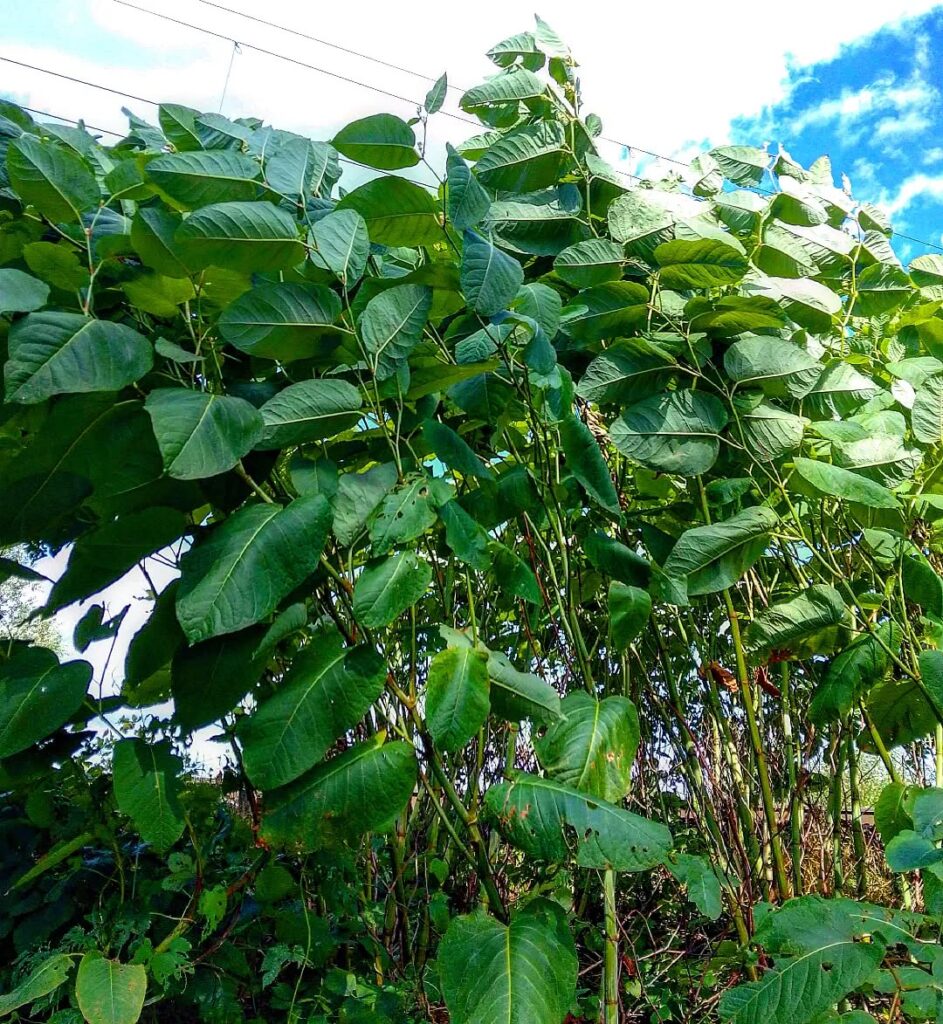
Often called one of the world’s worst invasive plants, Japanese Knotweed destroys foundations, roads, and natural habitats. It grows aggressively, reaching up to 10 feet tall in a single season. Once planted, removal is nearly impossible—even tiny root fragments can regenerate.
Control Methods:
- Never plant it. Some regions have banned its sale.
- Professional removal is often required due to its aggressive nature.
- Cut back stems repeatedly to weaken the plant over time.
4. Bamboo (Phyllostachys spp.) – The Garden Takeover
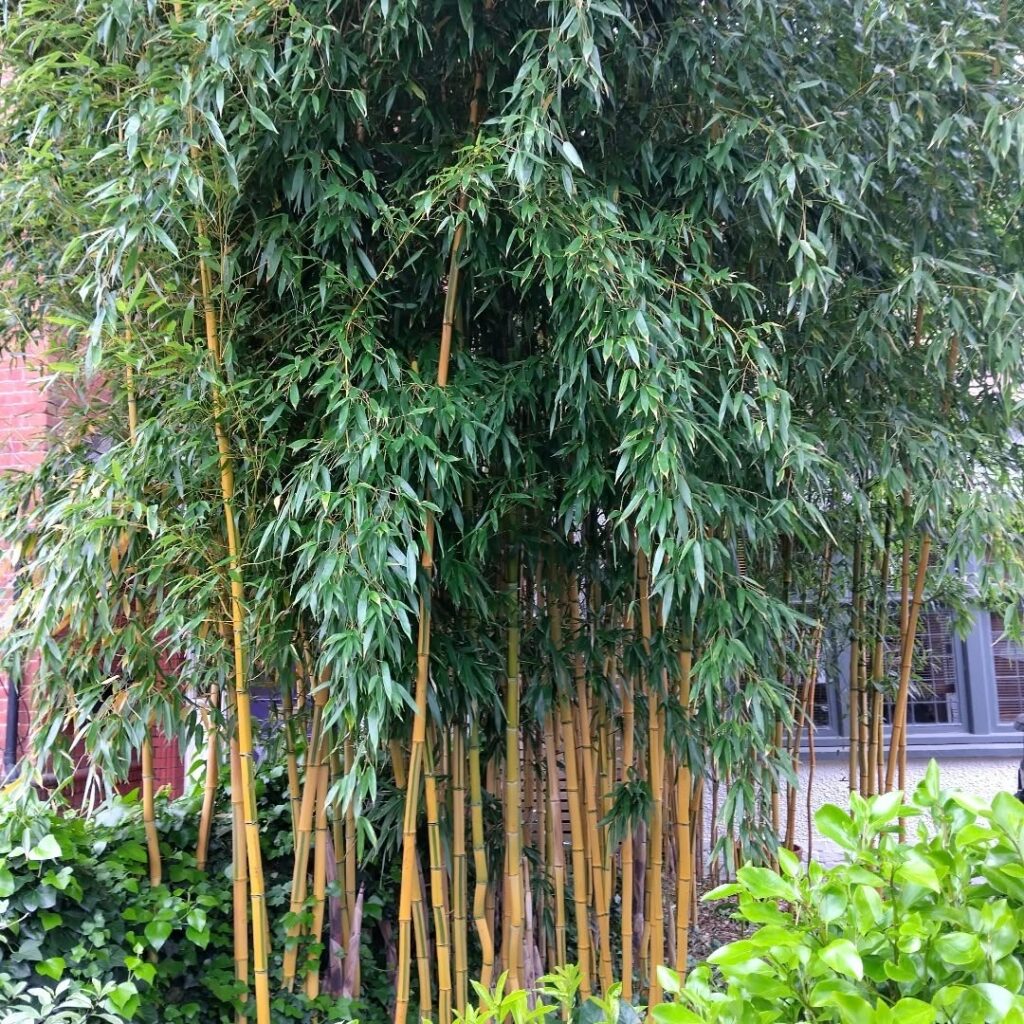
Bamboo is a fast-growing grass that adds a beautiful, tropical feel to gardens—but its running varieties spread aggressively, reaching up to three feet per day in peak growing seasons. The underground rhizomes creep beneath sidewalks, fences, and even neighboring properties, making it extremely difficult to control.
Control Methods:
- Opt for clumping bamboo instead of running bamboo.
- Use deep underground barriers to prevent rhizome spread.
- Regular cutting can slow expansion.
5. Purple Loosestrife (Lythrum salicaria) – A Wetland Invader
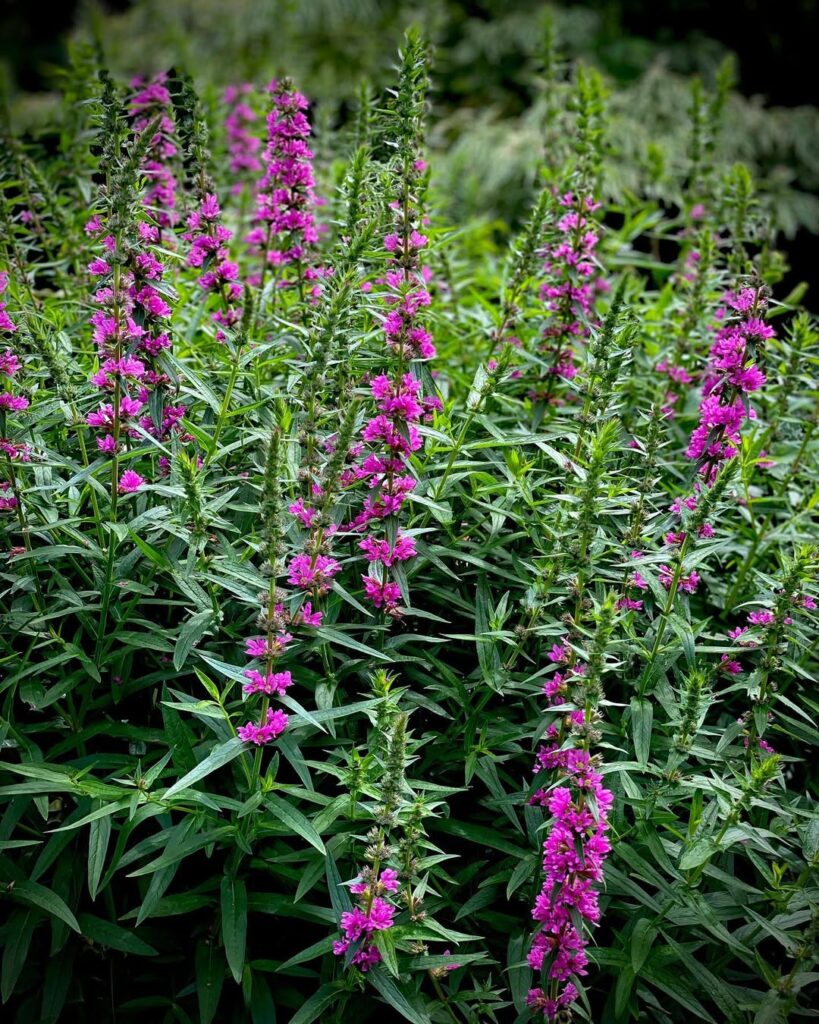
This perennial produces stunning purple flowers, but don’t be fooled by its beauty. It invades wetlands, outcompeting native plants and reducing food sources for wildlife. Purple Loosestrife can produce up to 2.5 million seeds per year, ensuring rapid spread across ecosystems.
Control Methods:
- Avoid planting it. Some regions have banned it due to its ecological damage.
- Pulling out young plants can help limit spread.
- Biological controls like beetles have been introduced to manage its spread.
6. Yellow Iris (Iris pseudacorus) – The Water Garden Intruder

Commonly found in wetlands and ponds, this vigorous perennial can quickly take over aquatic ecosystems, choking out native plants. It thrives in marshy conditions, forming dense colonies that reduce biodiversity.
Control Methods:
- Remove flower heads before they seed.
- Cut back yearly to manage spread.
- Consider planting native water-loving alternatives.
7. Chameleon Plant (Houttuynia cordata) – A Persistent Pest
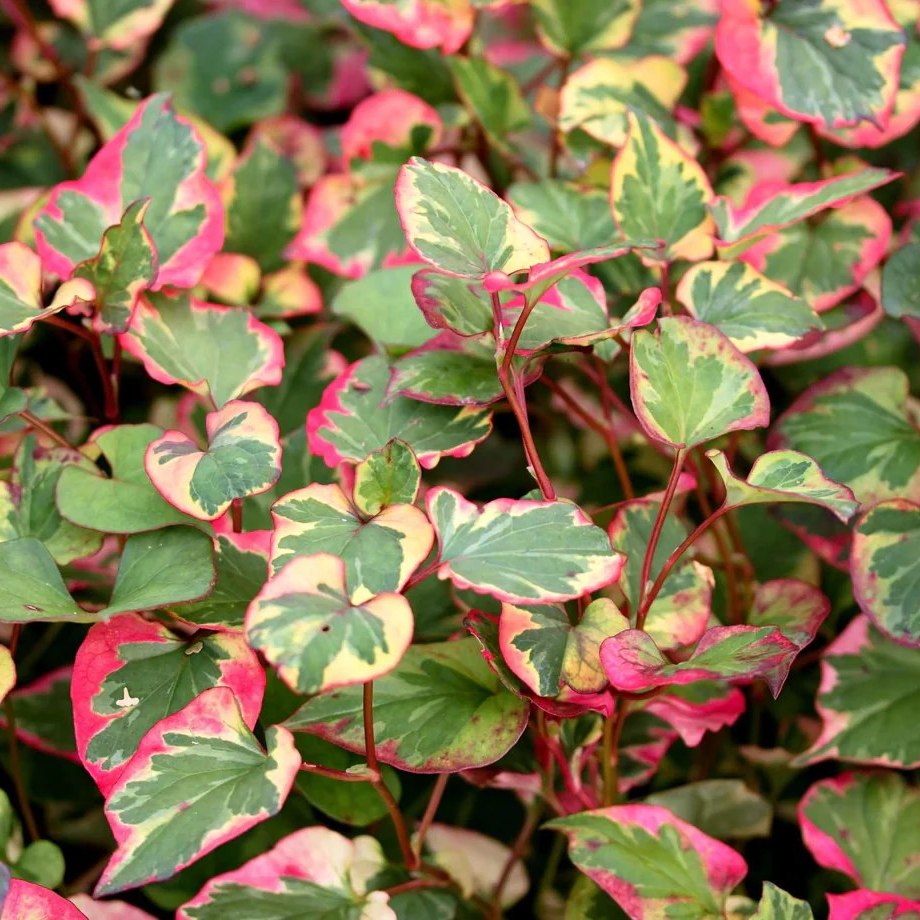
This colorful ground cover is striking, but its rapid underground spread makes it nearly impossible to remove. Even small root fragments left behind can regrow, making eradication extremely difficult.
Control Methods:
- Dig up roots completely, ensuring no fragments remain.
- Use herbicides sparingly, as physical removal is more effective.
- Plant less aggressive ground covers instead.
8. Lily of the Valley (Convallaria majalis) – A Fragrant but Fierce Spreader
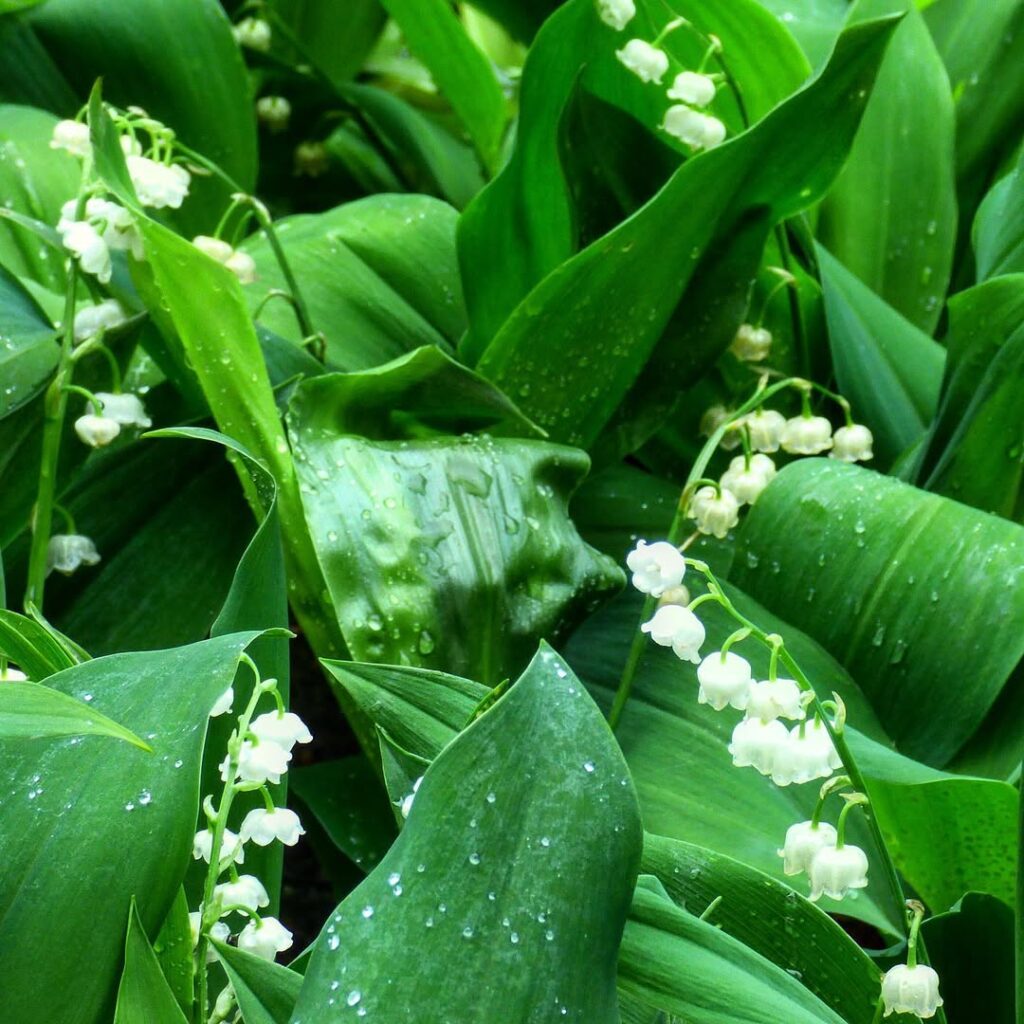
Lily of the Valley forms dense colonies, outcompeting surrounding plants. Its underground rhizomes spread rapidly, making containment challenging. While stunning, it’s best suited for controlled garden beds.
Control Methods:
- Trim back regularly to reduce spread.
- Use underground barriers for containment.
- Remove stray growth before it establishes deep roots.
9. Creeping Bellflower (Campanula rapunculoides) – The Silent Infiltrator

Often confused with more benign bellflower species, this plant is highly aggressive. It spreads underground, taking over gardens and lawns with its deep-rooted system.
Control Methods:
- Remove plants immediately upon spotting them.
- Regular mowing can limit spread in lawns.
- Avoid planting it near flower beds.
Final Thoughts: Protecting Your Garden
Invasive perennials might be pretty and tempting, but their unchecked spread can lead to frustration and ecological damage. To keep them under control, follow these simple gardening strategies:
- Choose non-invasive alternatives whenever possible.
- Use containers or root barriers to limit expansion.
- Regularly monitor plants and remove aggressive spreaders before they establish.
- Research before planting—a little preparation can save years of garden headaches!
While some of these perennials are hard to resist, knowing their growth habits can help you make smart planting choices and prevent unwanted takeovers in your garden.
